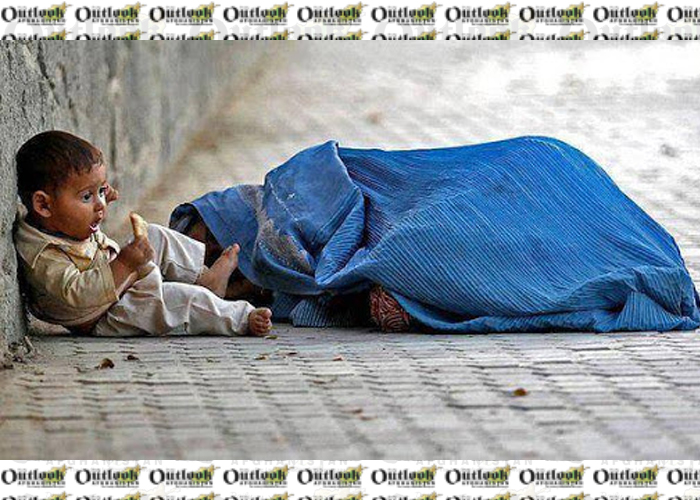Afghanistan already was one the poorest countries in the world as a result of forty years of war, but the level of poverty has intensified with the intensification of violence in recent years. In 2016, Afghanistan ranked 169th out of 188 countries with 54.5% of the population below the poverty line, but the level of poverty has increased to 72% in 2020 and or early 2021 as recently reported by the US Special Inspector General for Afghanistan Reconstruction (SIGAR). Accordingly, by the end of 2020, Afghanistan’s unemployment rate was projected to rise to 37.9%, up from 23.9% in 2019, the SIGAR report says.
These and other reports indicate that the level of poverty has extremely intensified with the intensification of violence and virus in 2020 and outwardly 2021.
Although there are different factors behind the rising of poverty, the rise of violence, virus, and the anarchic situation of the free-market with the decline of international aid are the most important factors. After the decline of international aid many people have not only lost their jobs but also lost one or several members of their family in the war, addition, or migration.
Unfortunately, the poor management of the market and poor fiscal policy of the central bank has also intensified the poverty level as Afghan currency lost its value and the basic goods became more expensive due to the formation of hidden and unhidden cartels or trusts in the country and consequently more people fell below the poverty line.
As pointed out, the levels of violence and virus have also worsened the economic situation in recent years. Unfortunately, neither the terrorist groups are tired of killing civilians and nor the political stakeholders are getting tired of watching this bloodshed scene. The ones who are really tired of this trend are the poor people of Afghanistan, but when we request the terrorists and terrorist backers with showing good-will to gun down, they further impose violence and killing of men, women, and children. The government has also appeared weak and irresponsible against these many violence and target killings in the country.
The next factor, as aforementioned, is the anarchic situation of the free market in the country.
Unfortunately, the pressure of the free-market on already poor people has remained an endless problem in Afghanistan. Instead of enhancing economic growth and helping people in hard times, it intensifies the pressure on the lower class of the society likely through the formation of hidden and unhidden cartels and trusts in the country. With every pretext, the prices are sharply increased justifying on the basis of the free-market system.
After each small or big event in the country, the prices of basic goods are sharply increased in the market but never deflate even after weeks and months. For example, most food items such as wheat flour, rice, and oil increased during Coro-virus quarantine but have not returned to their normal price range yet.
In spite of this anarchic situation in the free market of the country, no legal mechanism has created to ensure justice and stability in the market. If this situation is not controlled, the level of poverty will further increase in the country under the pretext of free-market while If we look at Pioneers of free-market system in the world such as the United States, United Kingdom, and Australia and also in China and Russia they have anti-monopoly law which is called antitrust law in the United States, anti-monopoly law in China and Russia, and trade practices law in the United Kingdom and Australia and also anti-cartel law in other democrat countries. In fact, because of the lack of a legal mechanism, the oppressive trend of the free-market system has deprived many people of basic needs making the poor poorer and rich richer.
The next fresh issue which newly revealed in media reports is the unequal share of poverty in the country when assessed it on the basis of locality, group, and rural and urban indicators. For example, the latest survey which has been carried out by Afghanistan’s National Statistics and Information Office shows that the 13th district, with 54 percent of the poor, is one of the poorest districts in Kabul. According to the survey, the 13th district is among the poorest and most populous districts in Kabul.
According to the survey, more than 20 percent of Kabul’s impoverished about 215,000 people live in the 13th district. Outside of the Kabul city, Estalif, Farza and khak-Jabbar districts are categorized with more 80% of them poor while other districts such as Mir-Bacha-koot, shaker-darah, and the center of Kabul city is with the lowest level of poverty.
Similarly, In Herat city, the district sixth, district ninth, and district tenth recognized as the poorest area while nearly half of the residents of these areas are poor.
Outside of Herat city, Ghorian district, Pashtu Zarghon distric,t and Oba districts are assessed among the poorest districts with a poverty rate of 60%.
The last category of people with the highest level of poverty is the disabled group of people in the country. If we imagine when the young and energetic people are unable to find jobs, how the disabled can do so while the number of disabled is worryingly rising in the country.
It is said that now there are more than 4,475,800 people with disabilities in Afghanistan.
This number constitutes about 14% of the total population while the percentage of people with disabilities in 2005 was 2.7% of the total population.
Because of crazy war and violence, the levels of disabilities are steadily increasing in the country. The findings of the Independent Human Rights Commission’s annual report show that the number of people with disabilities has increased by more than 11 percent over the past 14 years.
Home » Opinion » The Growing Challenge of Poverty in Afghanistan
The Growing Challenge of Poverty in Afghanistan
| Mohammad Zahir Akbari

